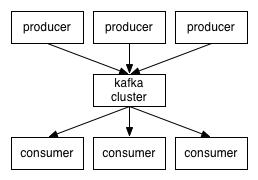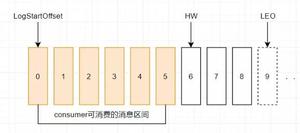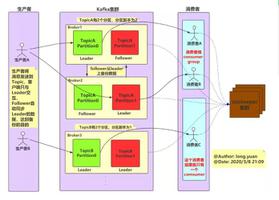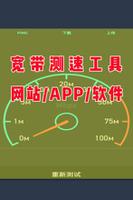Tensorflow tf.dynamic_partition矩阵拆分示例(Python3)
先给出一个样例看看
import tensorflow as tf
raw = tf.constant([1, 2, 3, 4, 5, 6, 6, 5, 4, 3, 2, 1])
'''
拆成 [1,2] [3,4] [5,6] [6,5] [4,3] [2,1]
'''
result_1 = tf.dynamic_partition(tf.reshape(raw, [6,2]),[0, 1, 2, 3, 4, 5], 6)
'''
拆成 [1, 2, 3, 4, 5, 6] [6, 5, 4, 3, 2, 1]
'''
result_2 = tf.dynamic_partition(tf.reshape(raw, [2, 6]), [0, 1], 2)
'''
拆成 [1] [2] [3] [4] [5] [6] [6] [5] [4] [3] [2] [1]
'''
result_3 = tf.dynamic_partition(tf.reshape(raw, [12, 1]), [0, 1, 2, 3, 4, 5, 6, 7, 8, 9, 10, 11], 12)
with tf.Session() as sess:
print(sess.run(result_1))
print(sess.run(result_2))
print(sess.run(result_3))
结果
[array([[1, 2]]), array([[3, 4]]), array([[5, 6]]), array([[6, 5]]), array([[4, 3]]), array([[2, 1]])]
[array([[1, 2, 3, 4, 5, 6]]), array([[6, 5, 4, 3, 2, 1]])]
[array([[1]]), array([[2]]), array([[3]]), array([[4]]), array([[5]]), array([[6]]), array([[6]]), array([[5]]), array([[4]]), array([[3]]), array([[2]]), array([[1]])]
再给出一个样例
Py3代码:
# one-hot 函数的样例
import tensorflow as tf
label = tf.placeholder(tf.int32,[None])
# 直接把 输入的序列进行One-Hot的结果
one_hot = tf.one_hot(label, 3, 1, 0)
# 进行转置
one_hot_new = tf.transpose(one_hot, perm=[1,0])
one_hot_new = tf.cast(one_hot_new, tf.float32)
# one_hot_new[2] = one_hot_new[2] * 1.5
# 按照每一维的大小进行拆分
one_hot_new_1 = tf.dynamic_partition(one_hot_new, [0, 1, 1], 2)[0]
one_hot_new_2 = tf.dynamic_partition(one_hot_new, [1, 0, 1], 2)[0]
one_hot_new_3 = tf.dynamic_partition(one_hot_new, [1, 1, 0], 2)[0]
# 按照每一维大小进行拆分
one_hot_1 = tf.dynamic_partition(one_hot_new, [0, 1, 2], 3)[0]
one_hot_2 = tf.dynamic_partition(one_hot_new, [0, 1, 2], 3)[1]
one_hot_3 = tf.dynamic_partition(one_hot_new, [0, 1, 2], 3)[2]
# one_hot_new_3 = tf.dynamic_partition(one_hot_new, [0, 0, 1], 2)[2]
# 拼接以上两维得到原来的结果
one_hot_new = tf.concat([one_hot_new_1, one_hot_new_2], axis=0)
if __name__ == '__main__':
with tf.Session() as sess:
sess.run(tf.global_variables_initializer())
one_hot_out, one_hot_new_out, one_hot_new_1_out, one_hot_new_2_out, one_hot_new_3_out, one_hot_1_out, one_hot_2_out, one_hot_3_out = sess.run([one_hot, one_hot_new, one_hot_new_1, one_hot_new_2, one_hot_new_3, one_hot_1, one_hot_2, one_hot_3], feed_dict={label: [0, 1, 1, 2, 2, 0, 0, 1, 2, 2, 0, 2]})
print("原始的One-hot结果:")
print(one_hot_out, end='\n\n')
print("以上的结果.T:")
print("方法一拆分:")
print(one_hot_new_out, end='\n\n')
print("拆分(1)维:")
print(one_hot_new_1_out, end='\n\n')
print("拆分 (2)维:")
print(one_hot_new_2_out, end='\n\n')
print("拆分 (3)维:")
print(one_hot_new_3_out, end='\n\n')
print("方法二拆分:")
print("拆分(1)维:")
print(one_hot_1_out, end='\n\n')
print("拆分 (2)维:")
print(one_hot_2_out, end='\n\n')
print("拆分 (3)维:")
print(one_hot_3_out, end='\n\n')
控制台输出:
原始的One-hot结果:
[[1 0 0]
[0 1 0]
[0 1 0]
[0 0 1]
[0 0 1]
[1 0 0]
[1 0 0]
[0 1 0]
[0 0 1]
[0 0 1]
[1 0 0]
[0 0 1]]
以上的结果.T:
方法一拆分:
[[ 1. 0. 0. 0. 0. 1. 1. 0. 0. 0. 1. 0.]
[ 0. 1. 1. 0. 0. 0. 0. 1. 0. 0. 0. 0.]]
拆分(1)维:
[[ 1. 0. 0. 0. 0. 1. 1. 0. 0. 0. 1. 0.]]
拆分 (2)维:
[[ 0. 1. 1. 0. 0. 0. 0. 1. 0. 0. 0. 0.]]
拆分 (3)维:
[[ 0. 0. 0. 1. 1. 0. 0. 0. 1. 1. 0. 1.]]
方法二拆分:
拆分(1)维:
[[ 1. 0. 0. 0. 0. 1. 1. 0. 0. 0. 1. 0.]]
拆分 (2)维:
[[ 0. 1. 1. 0. 0. 0. 0. 1. 0. 0. 0. 0.]]
拆分 (3)维:
[[ 0. 0. 0. 1. 1. 0. 0. 0. 1. 1. 0. 1.]]
以上这篇Tensorflow tf.dynamic_partition矩阵拆分示例(Python3) 就是小编分享给大家的全部内容了,希望能给大家一个参考,也希望大家多多支持。
以上是 Tensorflow tf.dynamic_partition矩阵拆分示例(Python3) 的全部内容, 来源链接: utcz.com/z/361757.html









